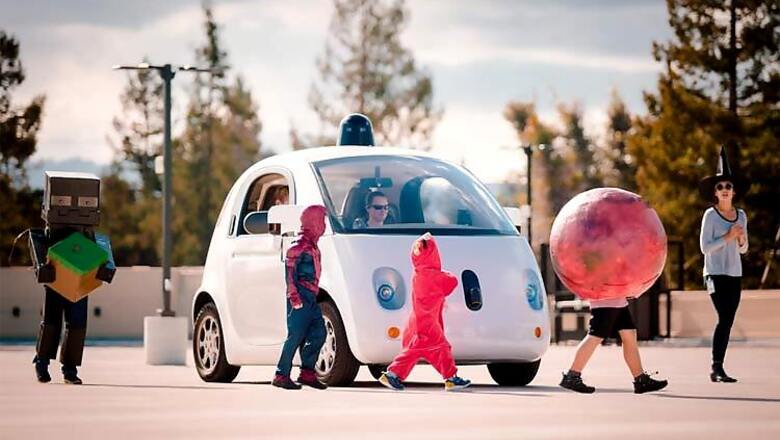
views
Washington: Self-driving cars are involved in fewer crashes on average than vehicles with a driver behind the wheel, a study released on Friday by the Virginia Tech Transportation Institute shows.
The study was commissioned by Alphabet Inc's Google unit, which has reported a series of minor crashes involving its self-driving fleet. It looked only at Google's fleet of more than 50 self-driving cars, which has logged 1.3 million miles in Texas and California in self-driving mode.
The test fleet has reported 17 crashes over the last six years, although none were the fault of the self-driving cars, Google said.
After adjusting for severity and accounting for crashes not reported to police, the study estimated cars with drivers behind the wheel are involved in 4.2 crashes per million miles, versus 3.2 crashes per million miles for self-driving cars in autonomous mode.
Crash rates for conventional vehicles at all severity levels were higher than self-driving crash rates, the study found.
A 2015 National Highway Traffic Safety Administration study found about 60 percent of property-damage-only crashes and 24 per cent of all injury crashes are not reported to the police.
California law requires all crashes involving self-driving vehicles be reported to police.
Google spokesman Johnny Luu said the company asked Virginia Tech "to look into the topic given the interest and develop a robust methodology to be able to make meaningful comparison between regular cars on the road as well as our self-driving cars."
Luu said the study "will be helpful making apples-to-apples comparisons moving forward."
A study released in October by the University of Michigan Transportation Research Institute compared crash rates among Google, Delphi and Audi self-driving cars in 2013 and found they had a higher rate than for conventional cars.
But that study noted the low volume of driverless miles -- 1.2 million compared with 3 trillion miles driven annually on US roads.
In December, California proposed state regulations that would require all autonomous cars to have a steering wheel, throttle and brake pedals when operating on California’s public roads. A licensed driver would need to be in the driver's seat ready to take over in the event something went wrong.
Google, eager to demonstrate its vehicles are safe, criticized the proposed rule, which it said would maintain "the same old status quo and falls short on allowing this technology to reach its full potential, while excluding those who need to get around but cannot drive."


















Comments
0 comment